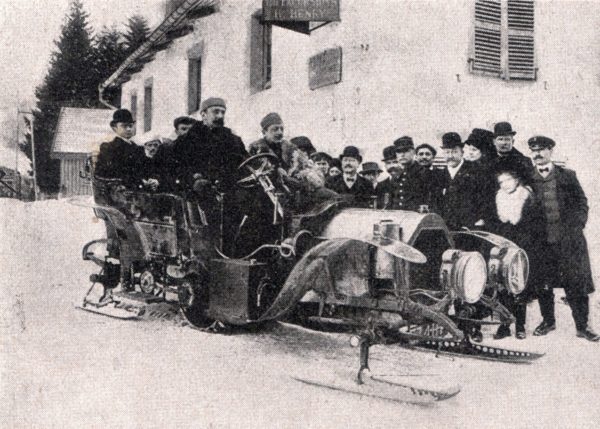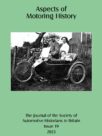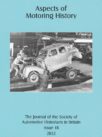
Our good friend Ariejan Bos, ace identifier of early cars, has made a positive identification of the origins of the de la Besse Motor Sleigh from Snapshot 208. We knew that it was a conversion from an unknown make, but Ariejan tells us that photos of this vehicle appeared in virtually every magazine around the world, and detailed descriptions were found in several of them (like Omnia, from where we obtained our information, and the Allgemeine Automobil-Zeitschrift). Also two photos can be found in the digital files of the French national archive Gallica-BnF. However, names of engine or car producer are mentioned nowhere in these publications. Furthermore, most pictures were taken from the side, but Ariejan found a few with different angles, of which he has kindly sent us the best one from the Dutch magazine De Auto dated 24 February 1910. It shows that the radiator has a very rounded bottom side, and confirms that the engine was 18 HP and that the car was registered in the Arrondissement de Chambéry in 1909/1910 (which includes Lyon).
Based on these facts Ariejan suggests a close relation with Vermorel. It is the only make with a similarly shaped radiator and Vermorel was produced in Villefranche-sur-Saône, just north of Lyon. An 18 HP engine was one their options at the time. However, many details are different, so we agree with him that the chassis was purpose-built to accept the specialised motor sleigh parts of the vehicle. Ariejan goes on to say that these changes may explain the presence of a dash reservoir (a Vermorel with this type of reservoir doesn’t exist). The chassis has straight rear ends, unlike the Vermorel, but the spring arrangement is completely identical. Other details also match, though not all. Our joint conclusion is that this was a special, built under supervision of de la Besse in the workshops of Vermorel using and transforming parts of one of their chassis. We are once again very grateful to Ariejan Bos for his generous help and detailed identification.







Leave a Comment